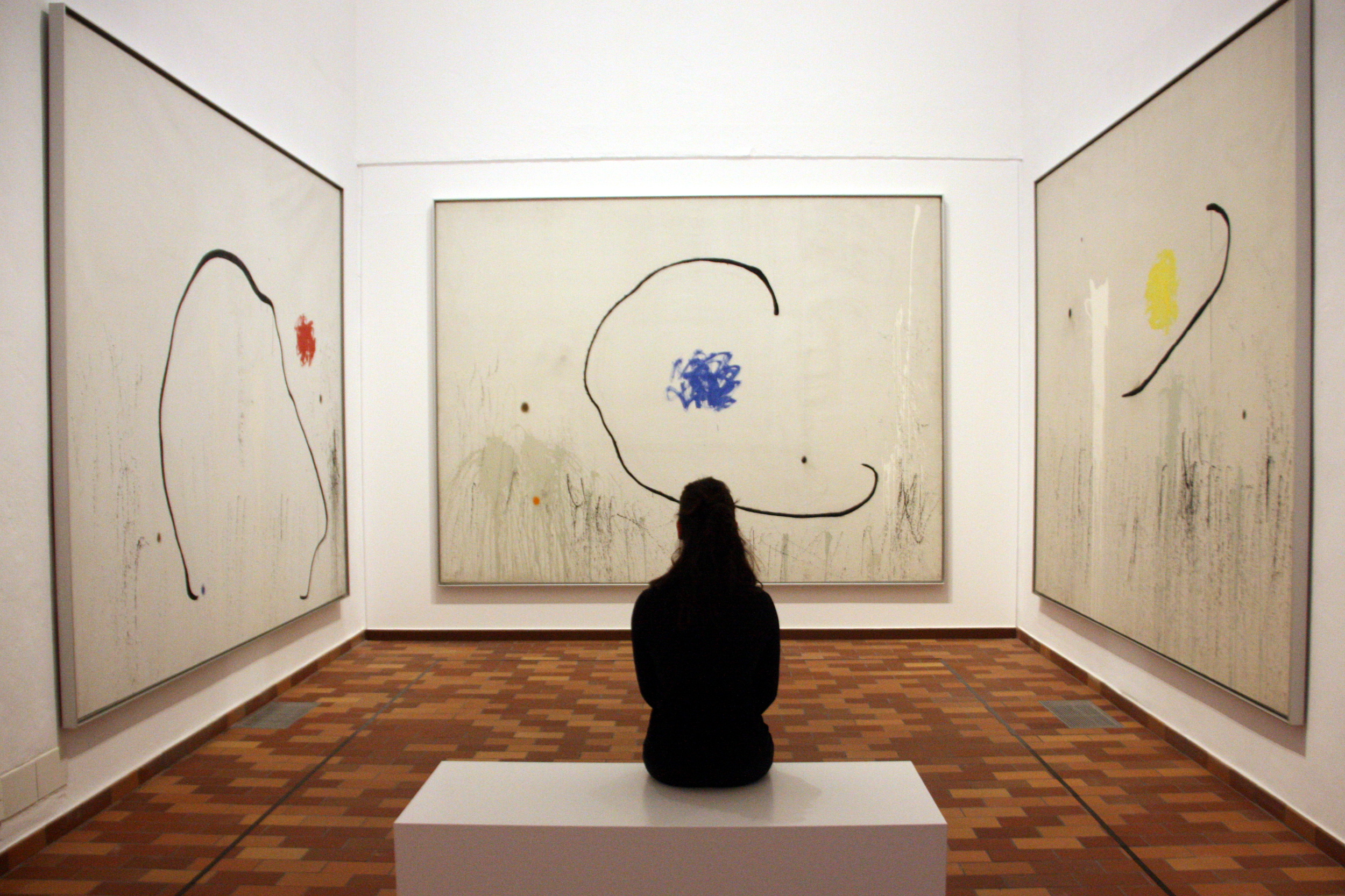The Joan Miró Foundation updates its permanent collection
To celebrate its 40th anniversary, the Joan MiróFoundation has updated its permanent exhibition and the collection of the Catalan painter´s work.The museum, founded in 1975 by Joan Miróhimself, will now permanently display the Kazumasa Katsuta collection, the triptych paintings ‘Painting on White to a Solitary Cell’and ‘The Hope of a Condemned Man’. Additionally added is the ‘Barcelona Series’, which will be part of the added works displayed in the eight halls of the museum. The museum itself was designed by architect Josep Lluis Sert in collaboration with his friend Joan Miró, and was created especially to display the painter´s key pieces. ‘Joan Miró. Collection’proposes the rediscovery of the permanent collection of the Foundation through a new exposition. The museum will also offer free activities, starting on the 9th of April.

Barcelona (CNA).- Coinciding with its 40th birthday celebration, the Joan MiróFoundation (Fundació Joan Miró, Centre d'Estudis d'Art Contemporani), a museum founded in 1975 by the artist it is named after, has updated its permanent collection. New additions to the exhibition include the Kazumasa Katsuta collection, the triptych paintings ‘Painting on White to a Solitary Cell’, ‘The Hope of a Condemned Man’, and the ‘Barcelona Series’. Additionally, the Foundation proposes to rediscover its already existing permanent collection by new expositions and renewed museography. The pieces will be shown in the Joan MiróFoundation, a building which was designed in a collaboration between Joan Miróand his friend, architect Josep Lluis Sert. This partnership has made the Foundation one of the few spaces in the world where an artist´s work can be displayed as he envisioned, in a “dialogue between the works and the space that houses them”, the Foundation stated. The museum will additionally be providing free activities starting on the 9th of April.
The collection has been enriched by the incorporation of works donated primarily from the family Miróitself, the integration of the Kazumasa Katsuta collection, which had up until now been on display in a separate hall and the recovery of some key pieces of the base collection of the Foundation, such as the triptychs ‘Painting on White to a Solitary Cell’(1968), ‘The Hope of a Condemned Man’(1974), and the ‘Barcelona Series’, amongst other novelties. ‘Joan Miró. Collection’proposes the rediscovery of the permanent collection of the Foundation through a new exposition. Thus, the spaces that architect Josep Lluis Sert and Joan Miróhad initially anticipated for showing key pieces of the exposition, such as the famed triptych paintings, have been recovered.
The exposition includes 150 works and is set in eight areas which will gather “the aspects that marked the artist´s creative research during his whole career”, the Foundation noted. The exposition takes up 1,558 m2 and will be held in the very halls that Joan Miróand architect Joan Lluis Sert envisaged would house the collection, expanded in 1988 by Jaume Freixa. Starting on the 9th of April, a schedule of free activities will welcome the new permanent exposition with the theme ‘Make it your own!’.
What defines Miró’s work
The Joan Miró Foundation’s director, Rosa Malet, emphasised that the celebration of the 40th anniversary will allow them to “offer an extensive panorama on what his artistic trajectory was”. Malet indicated that they “didn´t want to be slaves to chronology”but instead give priority to the concept. “We wanted to emphasise what defines Miró’s work and the difference from other artists”. “A magnificent repertoire has been assembled, and it represents the best Miró collection in the world”, stated the Joan Miró’s Foundation’s president, Jaume Freixa.
Malet hopes that visitors can“discover a new Miró, and that they are able to appraise that which they didn´t know well enough, so that, with a little time and attention, one may always be able to interpret Miró’s work in new ways”. This is, in fact, the expressed objective of the new presentation.
Puigdemont and Colau
The Catalan President Carles Puigdemont stated that within the global schedule of cultural events happening this Friday, ‘Joan Miró. Collection’is among the most significant. “The marriage between Barcelona and Miró is a cultural event with enormous international potential”, he declared. Catalonia’s executive head also noted referring to Miróthat “a nation that wishes to be free, faithful, creative, imaginative and innovative must be able to erect temples worthy of its best men”.
Barcelona’s Mayor, Ada Colau, declared that it´s necessary to recover more of the popular spirit of Montjuïc, and wants the Miró Foundation to “serve to bring art closer to citizens, and that the hill of Montjuïc become even more lived and loved by Barcelonians”.
The Joan Miró Foundation
The Joan Miró Foundation was originally devised in 1968 by Joan Miró himself, and is located on the hill of Montjuïc in Barcelona. The museum of modern art was created by the painter to encourage younger artists to experiment with contemporary art. The Foundation building itself, designed by architect and friend of Miró, Josep Lluis Sert, officially opened its doors in 1975; collaboration between the architect and the painter ensure that it is one of the few museums “anywhere in the world in which collaboration between artist and architect underpins the dialogue between the works and the space that houses them”, states the Foundation. Along with notable works donated by the founder and painter himself, the museum also displays work by Greenaway, Chillida, Magritte, Rothko and Calder, including the famed Mercury Fountain installation.